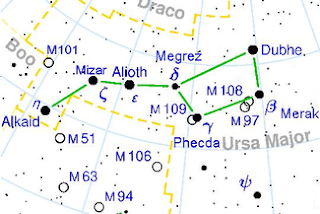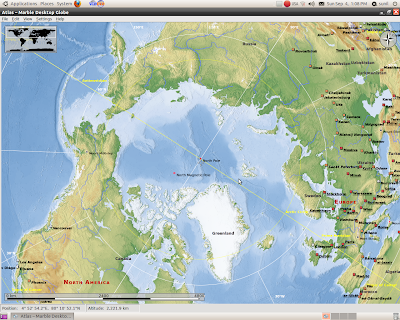

Sunspot 1302 Continues to Turn Toward Earth!!
A strong-to-severe (Kp=8) geomagnetic storm is in progress following the impact of a coronal mass ejection (CME) at approximately 8:15a.m. EDT (12:15 UT) on Sept. 26. The Goddard Space Weather Lab reported a strong compression of Earth's magnetosphere. Simulations indicate that solar wind plasma has penetrated close to geosynchronous orbit starting at 9am. Geosynchronous satellites could therefore be directly exposed to solar wind plasma and magnetic fields.Behemoth sunspot 1302 unleashed another strong flare on Saturday morning -- an X1.9-category blast at 5:40 am EDT. NASA's Solar Dynamics Observatory (SDO) recorded the extreme ultraviolet flash.
NASA images showing a shadowy shock wave racing away from the blast site are a sign that the blast produced a coronal mass ejection (CME) that could deliver a glancing blow to Earth's magnetic field on Sept. 26.
Since the X1.9-flare, active region (AR) 1302 has unleashed M8.6 and M7.4 flares on Sept. 24 and an M8.8 flare early on Sept. 25. None of the blasts have been squarely Earth-directed, but this could change as the sunspot turns toward our planet in the days ahead. AR1302 is growing and shows no immediate signs of quieting down!!!!!!!
what is a solar flare?
A solar flare is an intense burst of radiation coming from the release of magnetic energy associated with sunspots. Flares are our solar system’s largest explosive events. They are seen as bright areas on the sun and they can last from minutes to hours. We typically see a solar flare by the photons (or light) it releases, at most every wavelength of the spectrum. The primary ways we monitor flares are in x-rays and optical light. Flares are also sites where particles (electrons, protons, and heavier particles) are accelerated.The outer solar atmosphere, the corona, is structured by strong magnetic fields. Where these fields are closed, often above sunspot groups, the confined solar atmosphere can suddenly and violently release bubbles of gas and magnetic fields called coronal mass ejections. A large CME can contain a billion tons of matter that can be accelerated to several million miles per hour in a spectacular explosion. Solar material streams out through the interplanetary medium, impacting any planet or spacecraft in its path. CMEs are sometimes associated with flares but can occur independently.
Sunspots remain more or less in place on the sun. Near the solar equator the surface rotates at a faster rate than near the solar poles. Groups of sunspots, especially those with complex magnetic field configurations, are often the sites of solar flares. Over the last 300 years, the average number of sunspots has regularly waxed and waned in an 11-year (on average) solar or sunspot cycle.
4]Human and robotic explorers across the solar system are also affected by solar activity. Research has shown, in a worst-case scenario, astronauts exposed to solar particle radiation can reach their permissible exposure limits within hours of the onset of an event. Surface- to-orbit and surface-to-surface communications are sensitive to space weather storms.
















